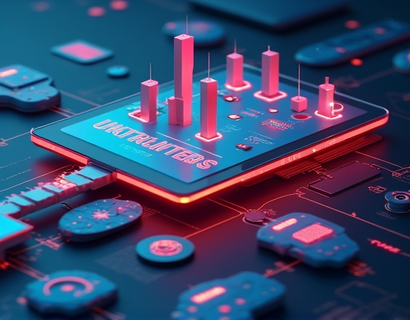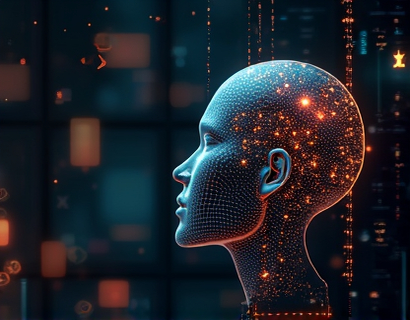AI Chat Avatar: Revolutionizing Digital Conversations with Cutting-Edge Technology
The digital landscape is rapidly evolving, and at the forefront of this transformation is the emergence of AI chat avatars. These sophisticated entities are redefining how we interact online, offering a blend of intelligence, personality, and adaptability that traditional chatbots can't match. The integration of advanced AI technologies into chat avatars is not just a novelty; it's a revolution in digital communication, promising to make interactions more natural, engaging, and insightful. This article delves into the world of AI chat avatars, exploring their capabilities, the technology behind them, and the profound impact they are having on digital conversations.
The Rise of AI Chat Avatars
AI chat avatars represent a significant leap forward from traditional text-based chatbots. While early chatbots were limited to predefined responses and basic scripting, AI chat avatars leverage machine learning, natural language processing, and cognitive computing to understand and generate human-like text. This evolution has been driven by advancements in AI research and the increasing availability of powerful computing resources. The result is a new generation of digital entities that can hold meaningful conversations, learn from interactions, and adapt to user preferences over time.
Key Technologies Powering AI Chat Avatars
The development of AI chat avatars relies on several cutting-edge technologies. At the core is natural language understanding (NLU), which enables the avatar to comprehend and interpret human language accurately. This involves tokenization, part-of-speech tagging, named entity recognition, and semantic analysis. On the generation side, natural language generation (NLG) algorithms create coherent and contextually relevant responses. These algorithms often use techniques like sequence-to-sequence models, transformers, and GPT (Generative Pre-trained Transformer) architectures to produce fluid and natural-sounding text.
Another crucial component is dialogue management, which governs the flow of conversation. This involves state tracking, context management, and decision-making to ensure the conversation remains coherent and engaging. Machine learning models, particularly reinforcement learning, play a significant role here by optimizing the avatar's responses based on user feedback and interaction history. Additionally, sentiment analysis helps the avatar gauge user emotions and adjust its tone and content accordingly, adding a layer of empathy and personalization to the interaction.
Designing an Engaging AI Chat Avatar
Creating an AI chat avatar that resonates with users requires a thoughtful design approach. The first step is defining the avatar's persona and purpose. This involves determining the avatar's character traits, expertise, and the type of conversations it will engage in. For instance, an avatar designed to explain complex scientific concepts might adopt a curious and explanatory tone, while one aimed at providing customer support might be more friendly and solution-oriented.
The visual representation of the avatar is equally important. While some avatars exist solely as text-based entities, others are designed with graphical representations, ranging from simple text-based icons to sophisticated 3D models. The visual design should align with the avatar's persona and enhance the user's sense of presence and engagement. For example, an avatar representing a virtual guide in an educational platform might have a friendly, approachable design with animated gestures to convey enthusiasm and interest.
Personalization is another key aspect of an engaging AI chat avatar. By leveraging user data and interaction history, the avatar can tailor its responses to individual preferences and needs. This might include using the user's name, referencing previous conversations, or adapting the level of technical detail based on the user's expertise. Personalization not only makes the interaction more relevant but also builds a sense of rapport and trust between the user and the avatar.
Applications of AI Chat Avatars
The potential applications of AI chat avatars are vast and varied, spanning multiple industries and use cases. In education, AI chat avatars can serve as virtual tutors, providing personalized explanations and interactive learning experiences. They can answer questions, offer feedback, and guide students through complex subjects, making education more accessible and engaging. For example, an AI chat avatar in a science platform could explain the principles of physics or biology through interactive simulations and real-world examples.
In customer service, AI chat avatars can enhance the user experience by offering quick and efficient support. They can handle routine inquiries, provide product information, and assist with troubleshooting, freeing up human agents to focus on more complex issues. The 24/7 availability and consistent performance of AI chat avatars make them an invaluable asset for businesses looking to improve customer satisfaction and reduce operational costs.
The healthcare sector is another area where AI chat avatars can make a significant impact. These avatars can provide patients with health information, schedule appointments, and offer emotional support. For instance, an AI chat avatar in a mental health app could engage in therapeutic conversations, monitor mood changes, and recommend coping strategies. The non-judgmental and always-available nature of AI chat avatars can help reduce the stigma associated with seeking mental health support.
In the realm of entertainment, AI chat avatars can create immersive and interactive experiences. Virtual companions and game NPCs (non-playable characters) powered by AI can engage users in deep, narrative-driven conversations, enhancing the overall gaming experience. These avatars can adapt to the player's choices and actions, creating a more dynamic and personalized story.
Benefits of AI Chat Avatars
The adoption of AI chat avatars brings numerous benefits to both users and organizations. One of the most significant advantages is the improvement in user experience. AI chat avatars can provide instant responses, handle multiple conversations simultaneously, and offer a level of personalization that traditional chatbots cannot match. This leads to faster resolution of issues, higher user satisfaction, and increased engagement.
For organizations, AI chat avatars offer cost-effective solutions for customer support and other repetitive tasks. By automating these processes, businesses can reduce operational costs and allocate human resources to more strategic and creative work. Additionally, the data collected from interactions with AI chat avatars can be analyzed to gain insights into user behavior, preferences, and pain points, informing product development and marketing strategies.
AI chat avatars also contribute to accessibility by breaking down language and cultural barriers. Multilingual capabilities and cultural sensitivity features enable these avatars to communicate effectively with a diverse user base, making digital services more inclusive. For individuals with disabilities, AI chat avatars can provide alternative interaction methods, such as voice commands or gesture-based inputs, enhancing their digital experience.
Challenges and Considerations
Despite their many advantages, AI chat avatars face several challenges that need to be addressed to ensure their successful adoption. One of the primary concerns is the accuracy and reliability of the avatar's responses. Misunderstandings and misinterpretations can lead to frustration and a negative user experience. Continuous training and refinement of the AI models are essential to minimize errors and improve performance over time.
Privacy and security are also critical considerations. AI chat avatars often handle sensitive user data, and ensuring the confidentiality and integrity of this data is paramount. Organizations must implement robust security measures, comply with data protection regulations, and be transparent about data usage to build user trust.
Another challenge is the ethical use of AI chat avatars. There is a risk of creating overly persuasive or manipulative avatars that exploit user vulnerabilities. Ethical guidelines and regulations are needed to ensure that AI chat avatars are designed and deployed responsibly, respecting user autonomy and well-being.
The Future of AI Chat Avatars
The future of AI chat avatars is bright, with ongoing advancements promising even more sophisticated and human-like interactions. One area of focus is the integration of multimodal capabilities, allowing avatars to understand and respond to not just text but also voice, images, and videos. This will create more rich and varied interaction possibilities, making digital conversations feel more natural and immersive.
Advancements in emotional intelligence will enable AI chat avatars to better understand and respond to user emotions, providing more empathetic and supportive interactions. This could be particularly beneficial in fields like mental health and customer service, where emotional intelligence is crucial.
The convergence of AI chat avatars with other emerging technologies, such as augmented reality (AR) and virtual reality (VR), will open up new frontiers in digital interaction. Imagine engaging in a virtual tour guided by an AI chat avatar, or participating in a VR game where the NPCs are intelligent, conversational entities. These scenarios are not just futuristic fantasies but are increasingly becoming a reality.
As AI chat avatars continue to evolve, they will play an increasingly important role in shaping the digital landscape. They will not only enhance user experiences but also drive innovation across various industries, fostering a more connected, intelligent, and inclusive digital world.























